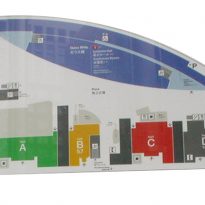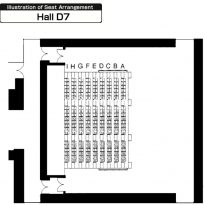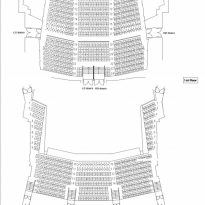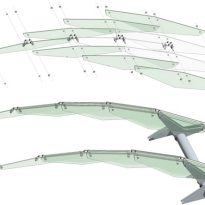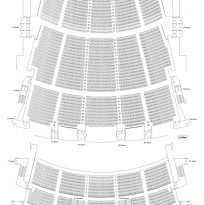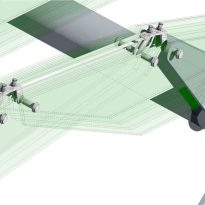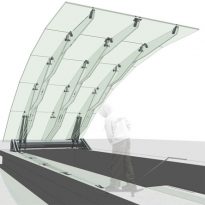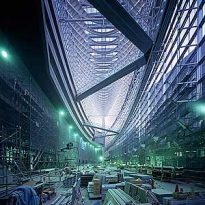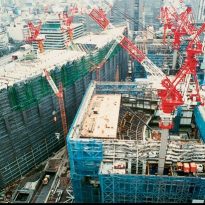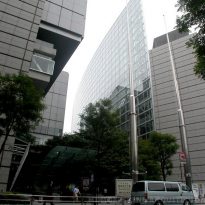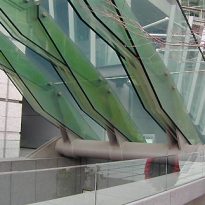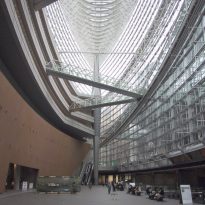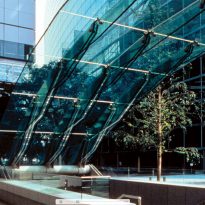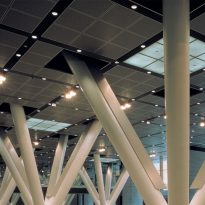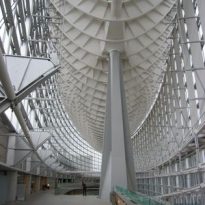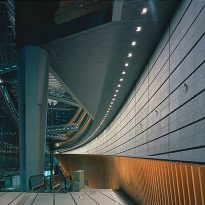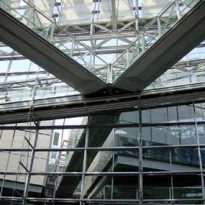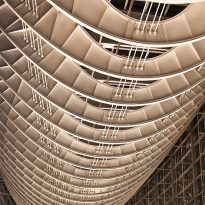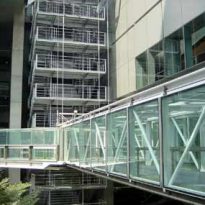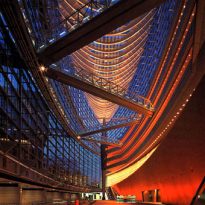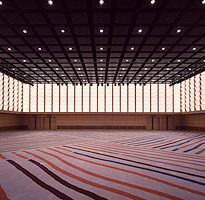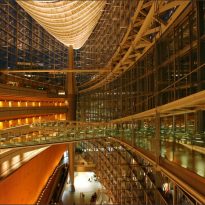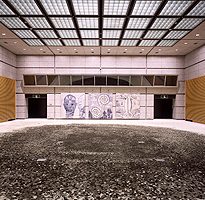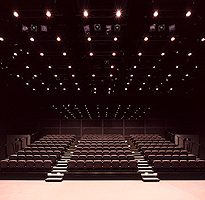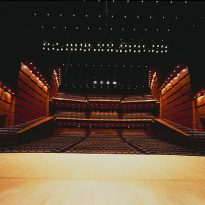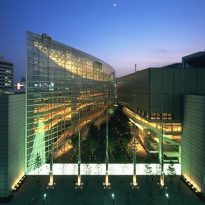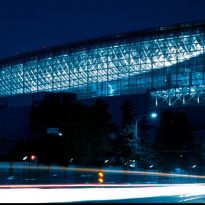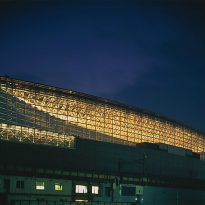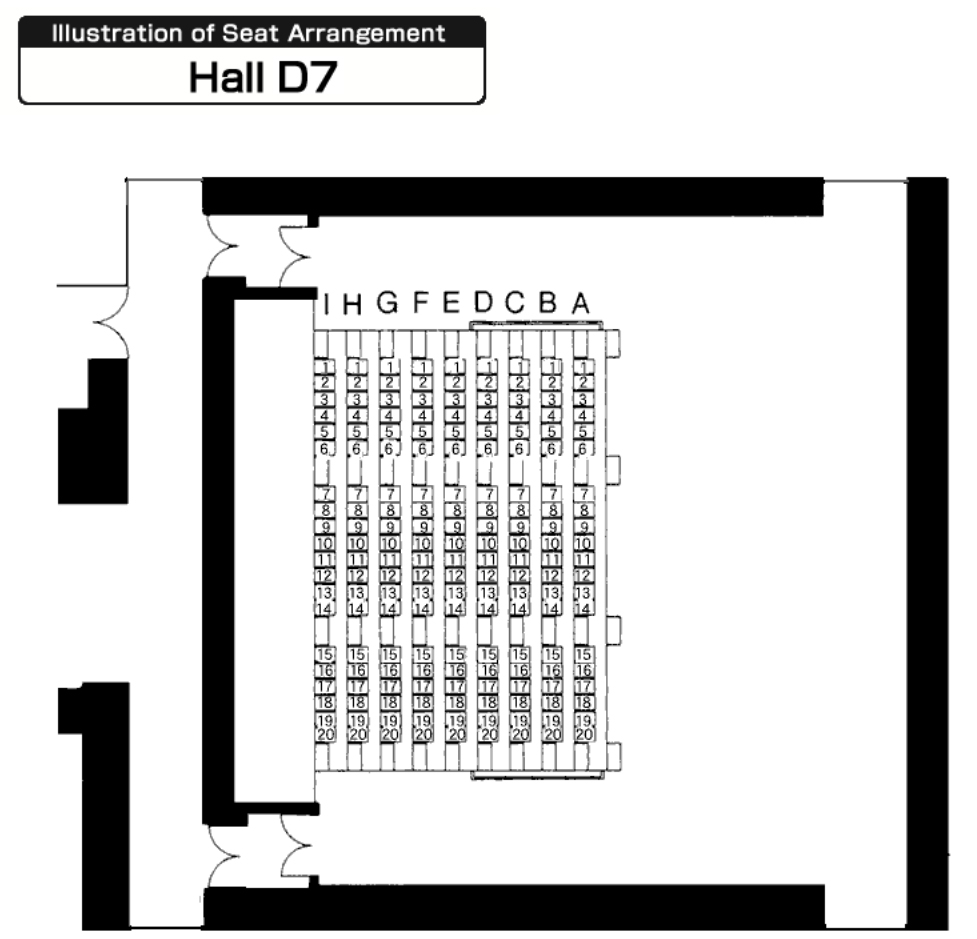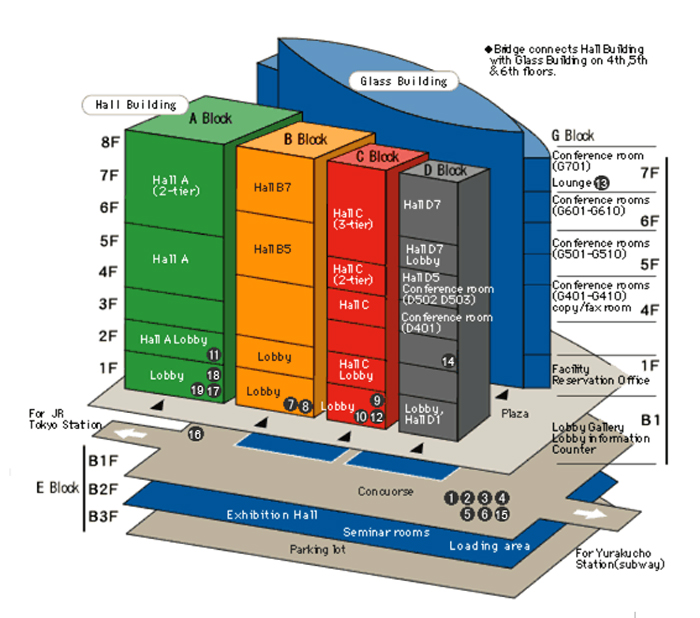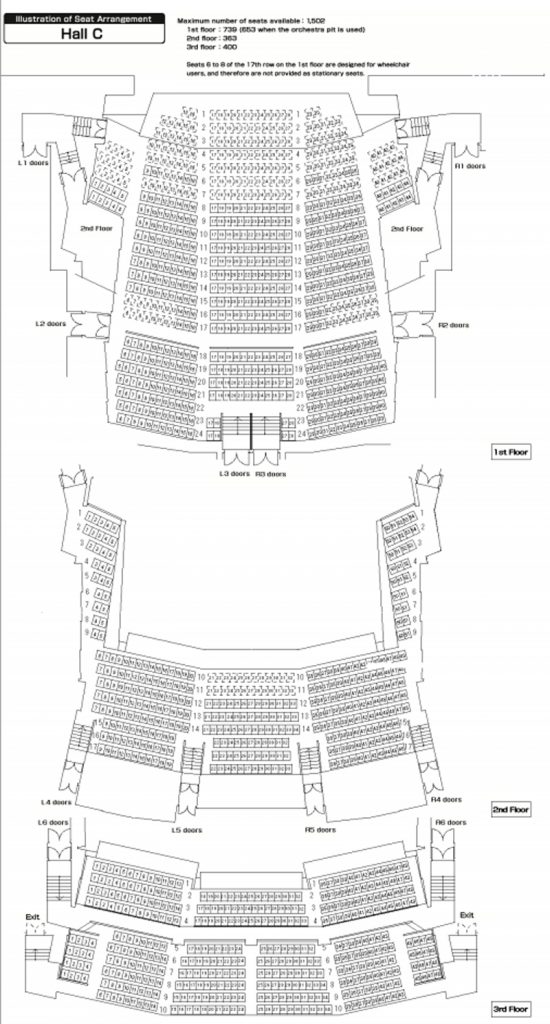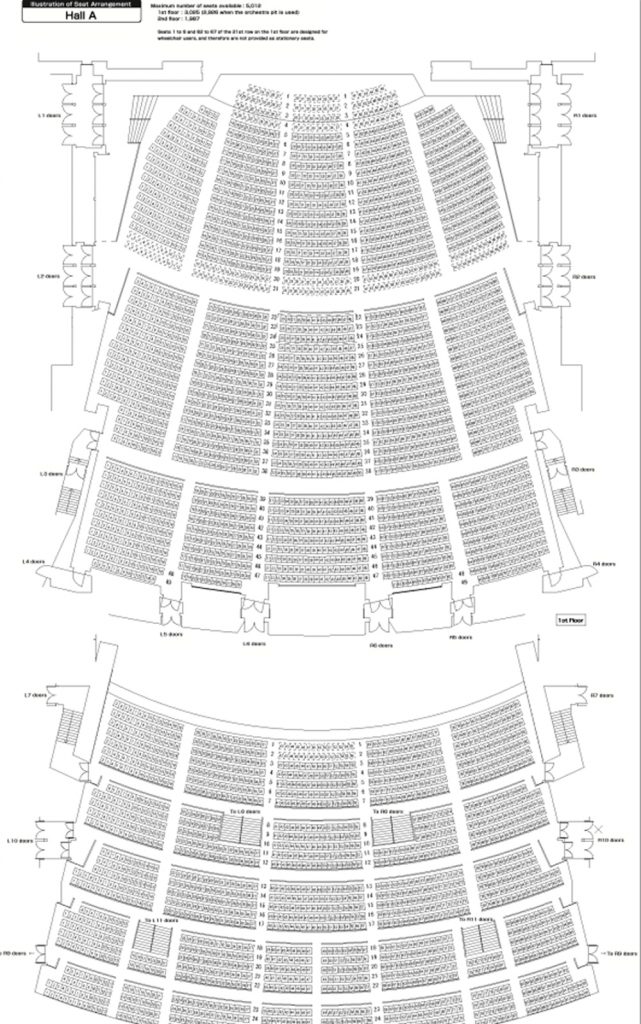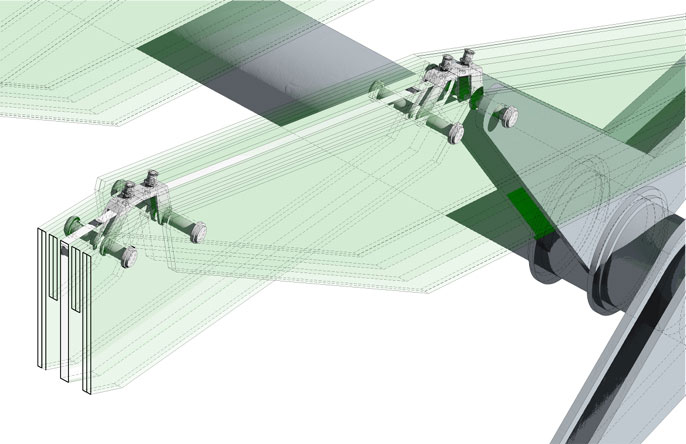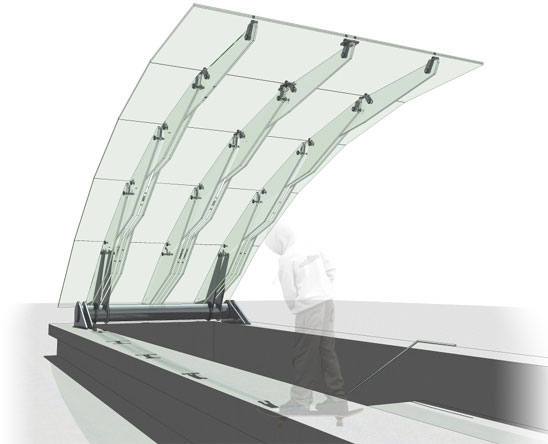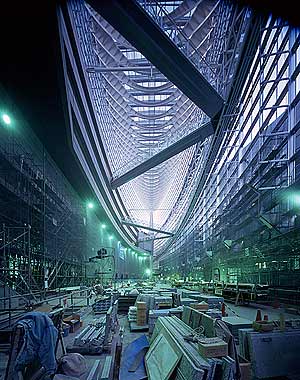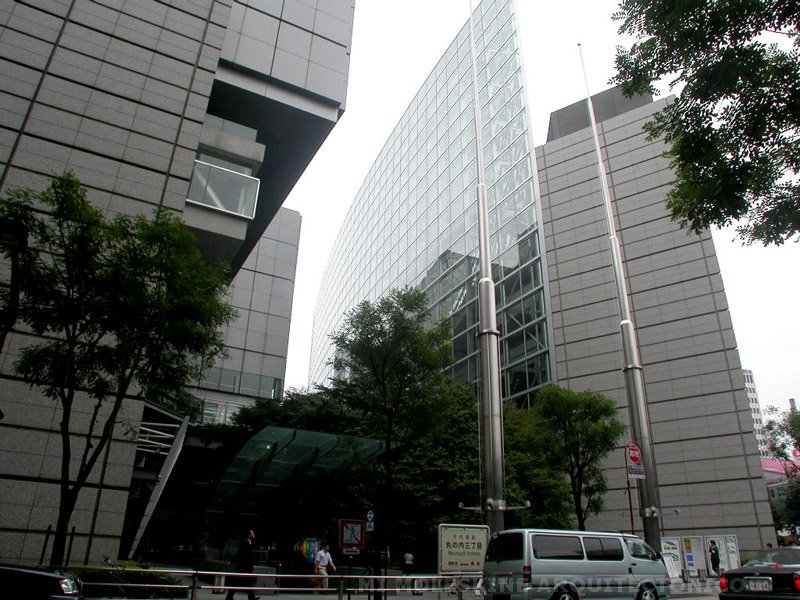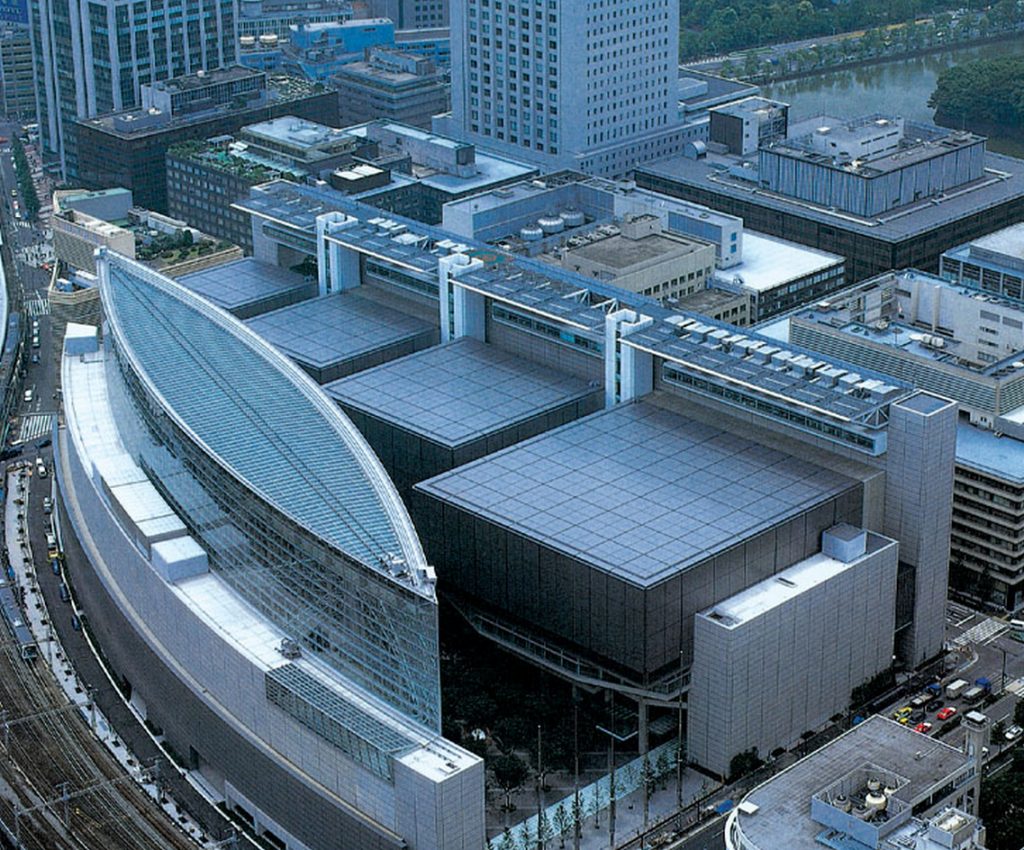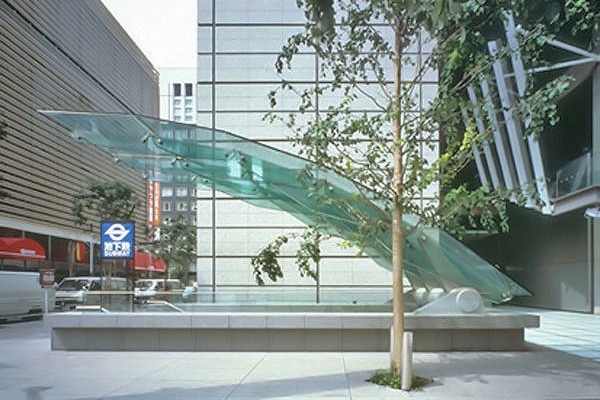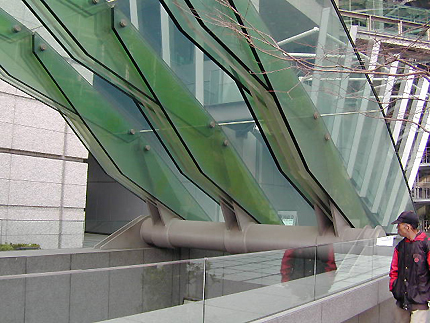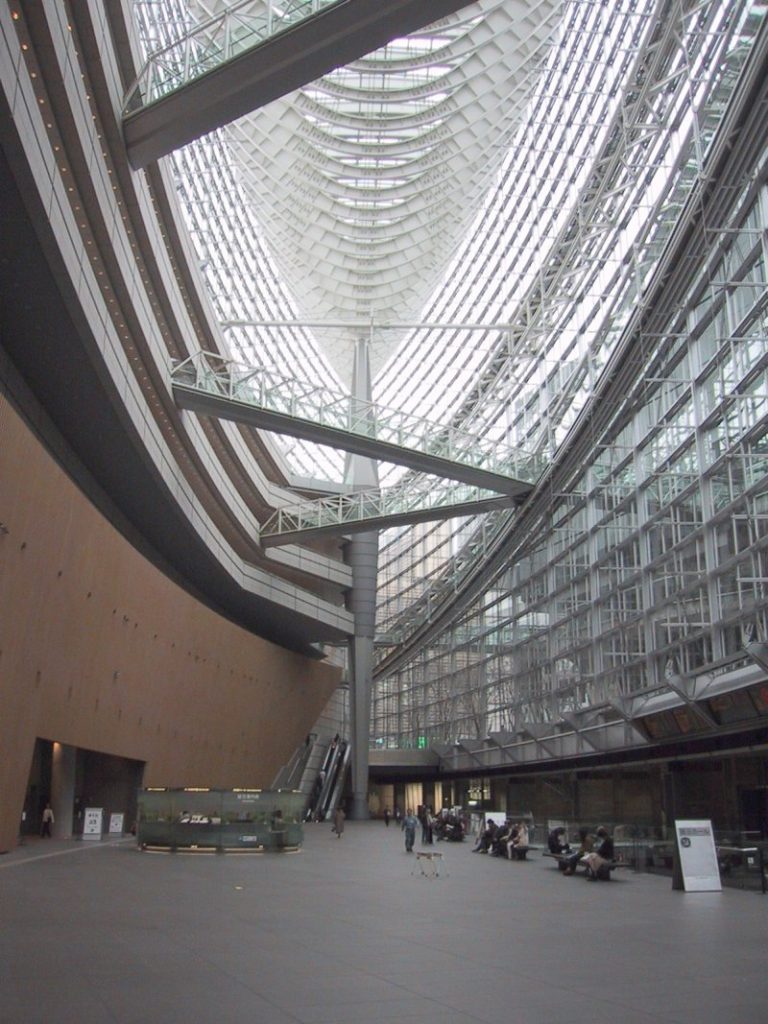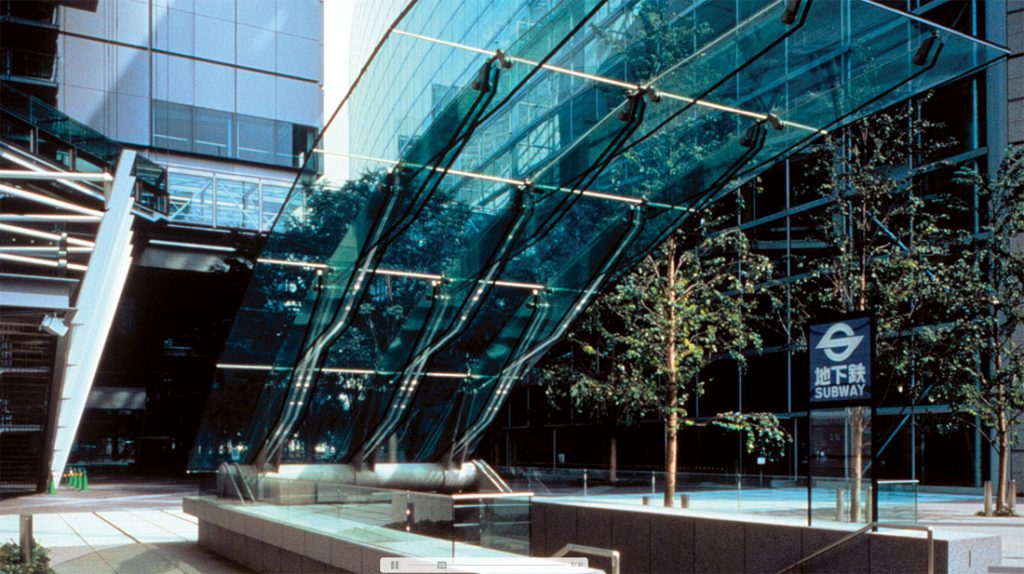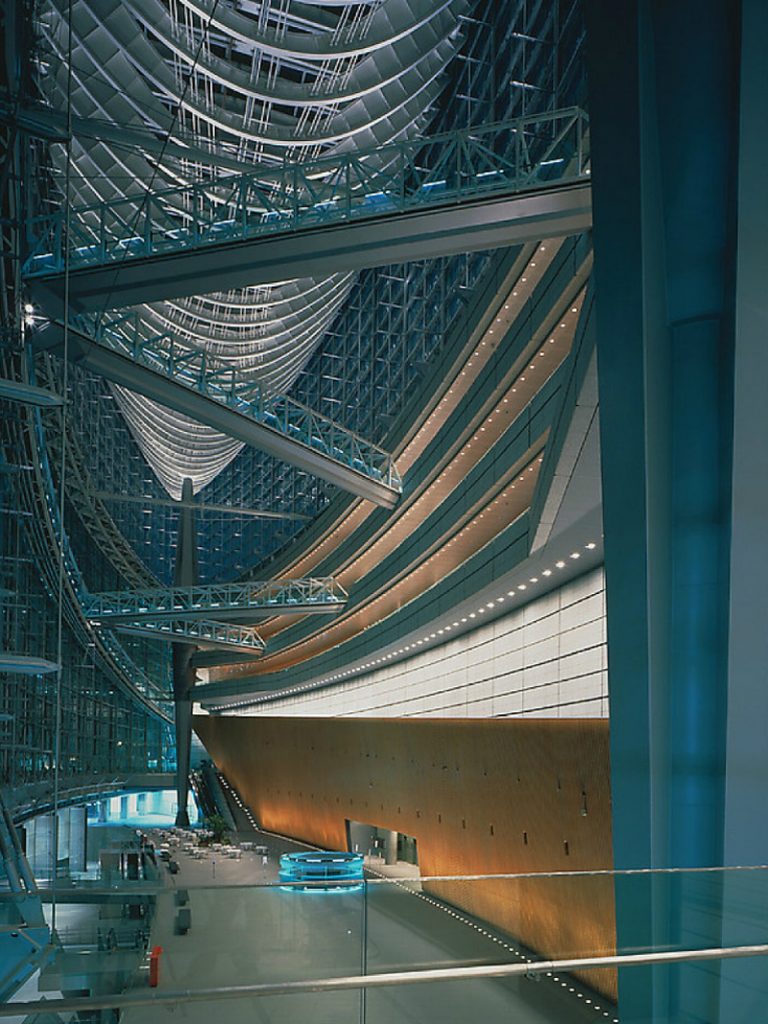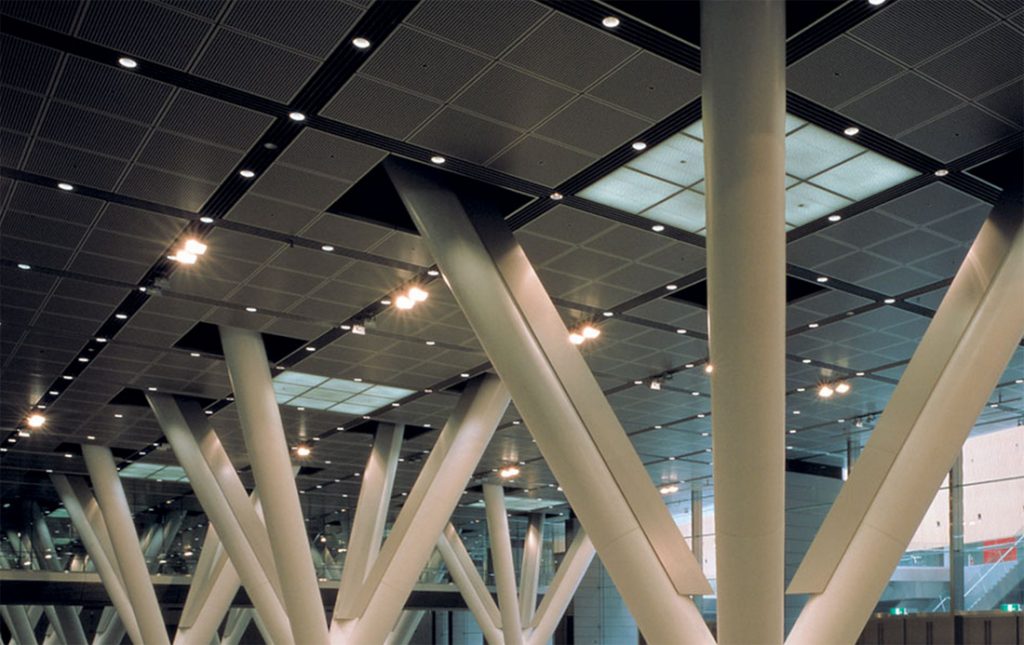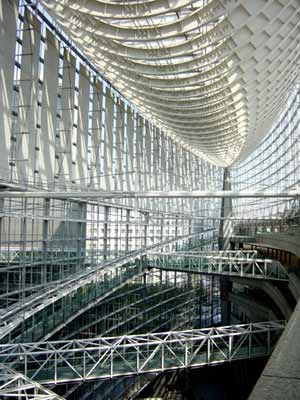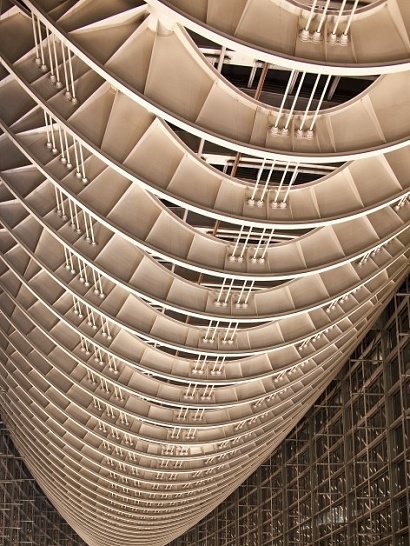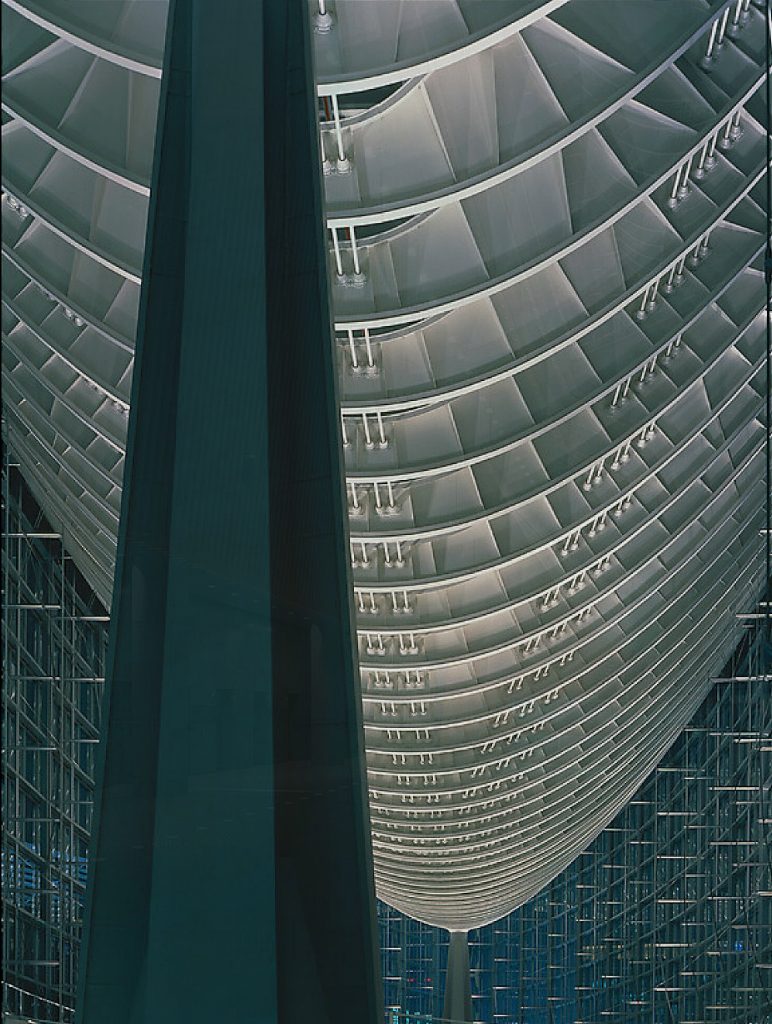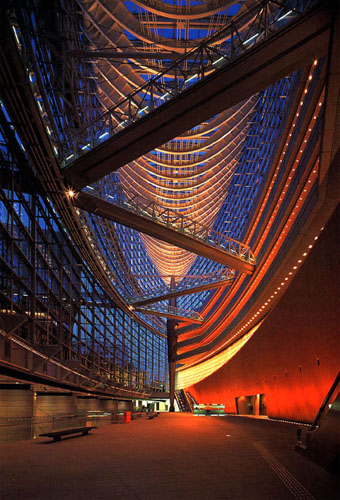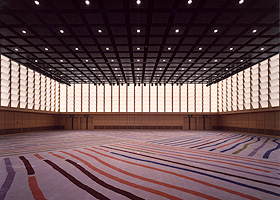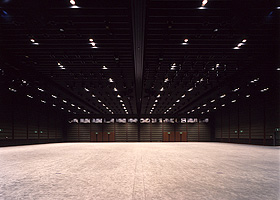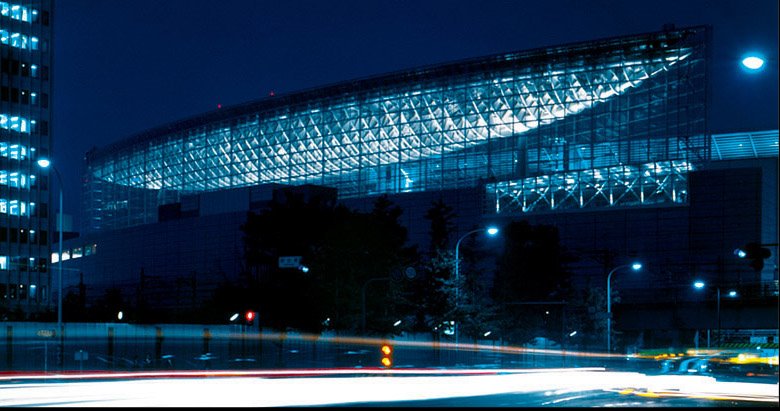Tokyo International Forum

Introduction
The Tokyo International Forum, commissioned by the Metropolitan Government of Japan’s capital, is the only civilian complex that hosts cultural events and business events. In the open international competition held in 1987 was won by architect Rafael Viñoly. The result of that competition was announced in 1989. Conceived as an integrated cultural information center to promote the dynamic contact between the intellectual, creative and trade-related activities, the Tokyo International Forum is definitely the most important among the many projects public use, made from Japan.
….. “In Japan, the main obstacle to the acceptance is to demonstrate commitment. It seems difficult for us today the long-term commitment. I moved to Japan and took most of my office. Together with people contracted in Tokyo, we were 250 people in our office, with 800 engineers “… (Rafael Viñoly)
Situation
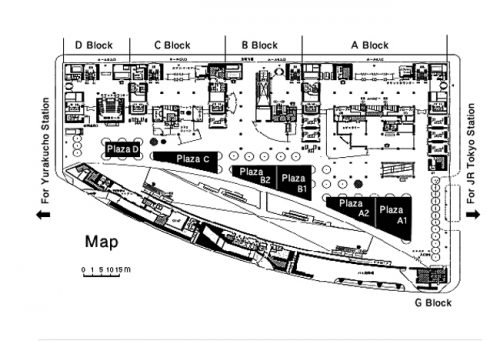
Located at the confluence of four subway lines and two main train stations, the site generates a significant pedestrian traffic. Their address is 5-1 Marunouchi 3-chome, Chiyoda-ku, Tokyo, Japan.
The Tokyo International Forum (TIF) is located in the commercial heart of the Nippon capital, in the district of Marunouchi (丸 の 内) located in Chiyoda between Tokyo Station and the Imperial Palace, bordering the traditional district of Ginza. Your name in Japanese means “inside the circle”, referring to its location within the palace’s outer moat. It is the financial center of Japan and the three largest banks are headquartered on.
A large independent crystal structure, the Yurakucho Canopy with 10×4.87 meters, houses a staircase leading to the metro station and is a key entrance to the complex.
Concept
Given the significant pedestrian traffic would create the complex, Viñoly with your design attempted to provide easy access for the public and provide impact protection of the surroundings.
The architect has linked its Crystal Hall with public spaces of the nineteenth century, comparing both the Gallery in Milan as the Crystal Palace in Madrid, with vast and imposing spaces, monumental staircases, bright bridges and ramps, all scaled almost Piranesian. Even the Plaza recalls the scale of other European models as Piazza Navona to Rome.
The entire set has been compared to the symbolic presence of the Sydney Opera House or Parisian grandeur of the Eiffel Tower
Spaces
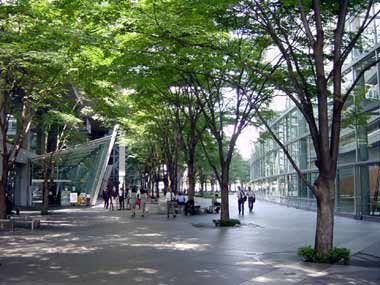
Within a perimeter bordered by a granite wall landscaped plaza that extends below the four spaces suspended from performing arts shows.
The lobbies of the theater looking over the square that serves as civic space and visually sneak into the Crystal Hall, the great glass enclosure that hangs over the frame of 208 meters long and nearly 60 high. At night, the light reflecting surface of the ribs of the colossus and transform the structure into a monolithic floating light source illuminating the Crystal Hall and perfilándolo on the horizon.
This modern high-tech style stands with eleven levels above ground level and three underground, including the Glass Hall and Atrium Glass in the west, crossed on its east side by a smaller rectangular metal clad volume housing the meeting rooms and four nearly cubic buildings, with 7 halls of different sizes, the main exhibition hall and 34 conference rooms. Everyone these spaces has the best equipment and sophisticated facilities. It also has restaurants, shops and other services.
The resort occupies a total area of about 145,000 square meters, on a triangular space of three hectares.
Square
The square paved with granite in the center of the complex not only serves as an entry point for the complex, but as a public space with seating, between trees Zelkova, Japanese Judas and sculptures. Of its approximately 9.700m2, an area of 2.042m2 can be used for shows.
Below the plaza, a public space that connects the railway networks involves an exhibition hall and becomes the first floor of the Hall of Cristal. Bridges and pedestrian ramps connecting conference rooms with theaters, providing total flexibility.
Theaters and halls
The International Forum includes two theaters, one of which is among the largest in the world, 5,000 seats in the concert hall and 1502 for the opera house. The conference area offers 1440m2 and a cinema of 380 m2.
- Hall A
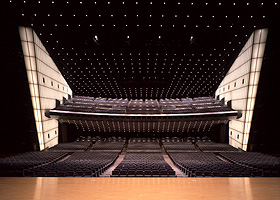
This is the largest of the rooms of the Tokyo International Forum, can deliver up to 5012 seats comfortably within its dual structure theater. It is located on the fourth floor of Block A of 8. The room has the most advanced equipment including a system of simultaneous translation in eight languages and projector 400 inch high definition. An advanced audio system allows musical performances, concerts and various theatrical events. The side walls, soft lighting create a relaxed atmosphere in the room.
- Hall B7
This 1.400m2m room divisible into two areas of 670m2 each occupies the 7th and 8th floor of block B.
The Hall B7 incorporates an open plan with a versatile area of 1,400 m2 space. This square multipurpose room with side lengths of 38m has a stage and seats that can be arranged as required. It has a system of simultaneous translation in eight languages. The room is equipped to host various events, including international conferences, exhibitions and fashion shows. Located on floors 7 and 8, Block B, this room has, from a window that is accessed by escalators, a magnificent view of the gardens of the Imperial Palace.
- Hall B5
Also in block B, the Hall occupies the 5th floor, 600m2 divisible into two sections 280 and 300m2 each.
The Japanese style and futuristic design are reunited in this space that has a large lobby and waiting room for the hosts and the guests of honor. On one side of the room is located an auxiliary kitchen that can work in combination with the main kitchen that is located in the B1.
- Hall C
Occupies the entire block C, 1st to 6th floor with a stage located on the 4th floor and sitting capacity to 1502 participants.
The Chamber C is designed to achieve ideal acoustics necessary in a music room. The seats are arranged in three levels with capacity for 1,502 people. To create an air of intimacy between artists and the public stage and seats are only separated by a space of 35m. The latest audio technology, including special speakers “sharper” to concert halls and control equipment on the reverberation of sound fields, ensures ideal sound characteristics for each function. The interior of the room features an elegant color, with walls made of Chinese quince wood, reminiscent of the wood used to make violins. On the second floor is the cafeteria.
- Hall D7

Occupies the 7th floor of boque D with an area of 340m2. This Hall is designed not only as a space for film, theater performances, concerts and exhibitions, but offers unlimited potential for new alternative forms of expression. Retractable seating and a deliberately simple décor create an ideal profile for experimental theater.
Cleats fastened to the ceiling to locate the speakers and lighting equipment easy attachment support the weight of a person to perform the preparation of the event. The lounge incorporates sound field control and control of active field. The lighting control equipment with digital memory stores information for up to 1,000 lighting combinations. With a wealth of technological innovations, the whole room can be used as a space or performance testing.
- Hall D5
With an area of 285m2 (16.50×17.20m) and a ceiling height of 6.35 meters, the Hall occupies the 5th floor of block D.
This room features a harmonious decoration using mainly granite and wood. All-glass facade, provides an open and refreshing interior space. The lounge can be used for various events, such as parties, seminars and exhibitions. Equipped with a system of simultaneous translation in eight languages serves as a major international conferences. Events can be handled efficiently by using adjacent conference rooms.
- Hall D1
This versatile room with 137m2 (10.10×12.50m) and a ceiling height of 4.70 meters is located on the first floor of block D.
- Exhibition Hall
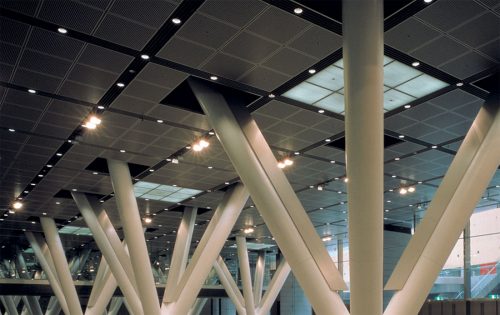
The exhibition hall covers an area of 5,000 m2 generous in block located in the basement, with a ceiling height of 9 meters. Surrounded by glass walls and granite surface can be subdivided into two sections 3000 and 2000m2. This Hall located under the other blocks can be seen from the esplanade B1, offering a vision of exposures to passersby. Two meeting rooms support the use of these facilities that provide the flexibility to meet a wide range of applications.
Narrow beams of low lights illuminate the exhibition hall whose lights are carried to the roof through the finger-props.
- Conference rooms
Distributed among the Glass Building (Block G) and the block D 34 conference rooms, 31 are located in the G and 3 block in D, their surfaces ranging from 26m2 to 206
Glass Hall

The volume of the Glass Hall, ie glass atrium emblem of the complex, was created following the convex curve of the railroad tracks that run eastward, doubling and inverting the curve to form ground a dynamic ellipse of about 208 meters long by 31.7 wide, 57.5 meters rises.
This Hall serves as the main reception area of the Forum. Using laminated glass, the architects managed to get natural light to illuminate the hall below ground. Laminated glass was also used for walkways and bridges giving them the appearance of flying through space.
In the Glass Hall exhibit higher has 224m2, 560m2 while the lobby can be divided into two areas of 280 m2 each for various uses.
Structure
Glass Hall
The structure resembling the curved shell of a boat is glass and steel, structural steel frame and a mega-network for glass curtain wall.
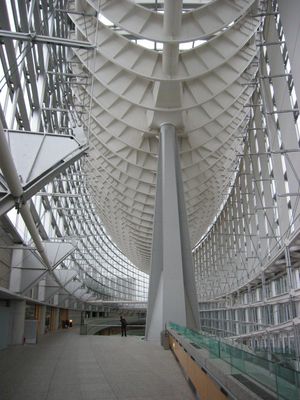
The Crystal Hall, one of the most daring structures ever built in Japan, consists of two intersecting ellipses glass and steel, enclosing a large central hall and unite the elements of the complex. This structure consists of eleven floors above ground, 60 meters high and three below. The 60 meter high curtain wall laminated glass was specially designed transparent to visually connect with theaters and square.
The structural system of this spectacular atrium space is extremely lightweight, transparent facade and roof are made possible by an innovative network formed by curved steel girders in compression and repeating elements in voltage wiring over 225 meters and is supported in only two columns in the center of the longitudinal axis at each end of the room. This hull shape, like the roof structure, seen through the laminated glass facade creates a distinctive mark on the skyline of Tokyo. This transparent atrium seems suspended in the void, supported by a single cantilever and two giant chamfered columns. A ramp along the entire Hall leading to the top of the building is intersected by a series of bridges that, besides connecting spaces function as horizontal struts for resisting wind pressure on glass walls, the the over-elevated walkways that lead to the theaters are added, crossing the pedestrian area and a system of pillars extending along the eastern perimeter. Steel beams are suspended midpoint along the roof in a design that mimics the structure of a wooden boat. Two huge columns support the roof structure.
According Viñoly, tectonics of the building comes from the conscious manipulation of the discharge path of the main forces on the foundations and controlled expression of these tours. The control is evident also in the details of the choice of materials and color range, plus the rigorous attitude details, highlighted by the exceptional craftsmanship skills of Japanese.
Cover Yurakucho

This totamente glass cover, the free structure was first done for this Forum, has around 5 meters wide with a length of 11 meters cantilever. Until then the maximum length of sheets of tempered glass available was 5 meters, in England. A series of plates with temperate 19mm thick sheets and pierced individually, were joined together by bearings glass forming cantilevered beams on the cover support. The number of sheets that overlap increases towards support, consistent with the bending moment and the force on each pin connection.
The key design method was force transfer connections to ensure that the areas of bearings were sufficient and engineered with the precision necessary to avoid high stress concentrations. The glass hardening process put under compression entire surface, including inside the holes, the required voltage around them was determined with detailed stress analysis, use of conventional formulas to stress concentration factors or physical tests strain gauges.
Materials
In the front of the Glass Hall approximately 20,000m2 17.5mm laminated glass, heat-strengthened used. Laminated glass is made sandwiching a plastic interlayer between two sheets of glass and has been commonly used in the windshields of cars.
Using this material architects were able to satisfy both aesthetic needs in the design of the center, as well as providing safety features and comfort needed for a structure that would be highly utilized.
In the supporting structure of this building high-tech 6,600 tons of steel were used. At night, the impressive beam structure is illuminated dramatically with Gimbal directional lights installed around the perimeter. This makes the steel structure appears to be floating, despite 6,600 tons.
Completing the structure lighting, lighting of walls using rows of lights with special lenses create a characteristic light in the foyer which emphasizes the deep architectural lines of the building.
Video
